A Woman's Face

Brief Synopsis
Cast & Crew
George Cukor
Joan Crawford
Melvyn Douglas
Conrad Veidt
Osa Massen
Reginald Owen
Film Details
Technical Specs

Synopsis
In Stockholm, Sweden, as Anna Holm enters a courtroom waiting for her murder trial to begin, witnesses are sworn in. The first witness, Herman Rundvik, relates the following testimony: Late one night, at a rural tavern, aristocrat Torsten Barring hosts a party that includes Vera, the faithless wife of noted plastic surgeon Gustav Segert. When the tavern will no longer extend Torsten credit, he charms Anna Holm, the badly scarred proprietress, into signing his check. Bernard Dalvik then testifies that he, Anna and Rundvik made most of their money from blackmail: One day, just after Torsten visits Anna, who has fallen in love with him, Vera arrives, begging Dalvik to help her retrieve letters that she has written to a lover. Vera then testifies: Anna takes the letters to Vera but hatefully demands more money because Vera is beautiful. Vera is at first frightened by Anna, but when Anna becomes lost in thought talking about love, Vera cruelly shines a light on her face. While Vera is getting her jewels to pay for the letters, Gustav comes home unexpectedly and Anna falls as she tries to elude him. Thinking that Anna is a thief, Gustav wants to call the police, but Vera pretends to take pity on her and convinces him to let her go. Gustav becomes intrigued by Anna's scars and caustic manner, and offers to perform plastic surgery on her. Anna is sworn in next. After briefly relating that her childhood scars were caused when her drunken father accidentally started a fire, she describes her relationship to Torsten: Because he treats her as if she is beautiful and charming, Anna suspiciously asks what trouble he is in and he suggests that he is not now in trouble but might need her help in the future. Anna then tells the court that she submitted to twelve operations because she loved Torsten: Two years after the initial operation, Anna has turned into a beautiful woman no longer ridiculed by strangers. After leaving Gustav's Swiss clinic, she goes to Torsten, who did not know where she was, and he obliquely tells her that his uncle, Consul Magnus Barring, who is very old and very rich, is leaving everything to his four-year-old grandson, but if something happens to the grandson, Torsten will inherit everything. Although Anna does not want to murder anyone, she agrees to help Torsten by posing as a governess. Using the name Ingrid Paulson, Anna is hired by the consul on Torsten's recommendation and goes to live in his chateau. Despite her attempts to remain aloof, she finds that she likes the kindly consul and his sweet natured grandson, Lars-Erik. One night, Torsten comes to the chateau for a party, as does Gustav. Thinking that she has softened and changed her name to start a new life, Gustav does not reveal her true identity. The next day, while secretly trying to listen to a conversation between Torsten and Gustav, Anna leaves Lars-Erik too long under his sun lamp and her genuine distress makes Torsten suspicious of her resolve to kill the boy. He gives her an ultimatum that Lars-Erik must die before the next night, and she reluctantly agrees because she loves him. As Anna breaks down on the stand, Gustav is called to testify: He is suspicious of Anna after the sun lamp accident, especially after seeing her talking with Torsten at the nearby falls. As she then leads Lars-Erik to a basket ride across the falls, Gustav catches another basket and sees her save the child from falling into the water. Seeing Anna embrace Lars-Erik, Gustav realizes that she is not a murderer. Gustav admits to the prosecutor that he is in love with Anna, after which Emma Kristiansdotter, the consul's housekeeper, testifies that she later overheard Torsten and Anna talking: Torsten taunts her for having become soft and frightens her by talking of the power the consul's money will bring him. On the consul's birthday, just before a traditional sleigh ride, Anna gives him a portable chess board, which Emma says she put with the other gifts. Now the consul testifies: Anna and Gustav are to ride together with Lars-Erik, but Torsten races by with the boy in his sleigh. The others think he is racing with Gustav and Anna as they try desperately to save the frightened child. Anna confesses everything to Gustav and says that she now hates Torsten. When they reach the sleigh, Torsten won't stop until Anna takes out a gun and shoots him. They save the boy and Torsten's body slips into the falls. As the consul continues, Anna interrupts and says that he knows she is innocent because of the note she left in the chessboard. Now Emma comes forward and admits taking the letter, in which Anna warned the consul about his nephew and said that she was going to commit suicide. While the judges adjourn to consider the case, Vera tries to reconcile with Gustav, but he refuses and goes to Anna. They profess their love for each other and he proposes, after which the court attendant says that the judges are ready to give their decision, and suggest that Gustav might want to come along.

Director

George Cukor
Cast
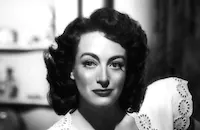
Joan Crawford

Melvyn Douglas

Conrad Veidt

Osa Massen
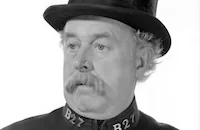
Reginald Owen

Albert Bassermann

Marjorie Main
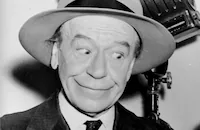
Donald Meek

Connie Gilchrist

Richard Nichols
Charles Quigley

Gwili Andre
Clifford Brooke

George Zucco

Henry Kolker
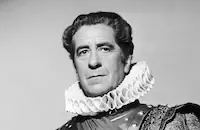
Robert Warwick

Gilbert Emery
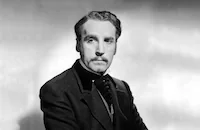
Henry Daniell
Sarah Padden

William Farnum

James Millican
Crew
Adrian
Cedric Gibbons
Bronislau Kaper
Ernst Matray
Elliot Paul
Robert Planck
Wade B. Rubottom
Victor Saville
Douglas Shearer
Gile Steele
Donald Ogden Stewart
Marvin Stuart
Frank Sullivan
Edwin B. Willis
Edward Woehler

Photo Collections
Videos
Movie Clip



Trailer
Film Details
Technical Specs

Articles
A Woman's Face (1941)
Crawford had seen a Swedish film, A Woman's Face (1938), starring David O. Selznick's new discovery Ingrid Bergman as a horribly scarred woman whose bitterness leads her into a life of crime. Her life changes when plastic surgery restores her beauty, but she finds it more difficult to change inside. Crawford decided that her next film would be a remake of A Woman's Face (1941), and George Cukor, who had directed both The Women and Susan and God (1940), would direct. MGM head Louis B. Mayer was certain it would ruin her career. "Are you crazy? Do you want the public to see you looking ugly?" But Crawford was adamant, and Mayer grudgingly agreed.
Working with Cukor to create her character, Crawford trusted her director completely. Cukor stood on the sidelines, watching her carefully for any sign of what he called "the touches of the movie queen sneaking in," and would contort his face and body to remind her that she had to be the deformed, defeated woman. In a scene where the character tells the story of the accident that scarred her face, Cukor recalled that he wanted Crawford to speak the lines in a flat, matter-of-fact way, with no emotion. He told her to prepare by reciting the multiplication tables over and over again, until her voice faded into a monotone. The scene is one of the most effective in A Woman's Face. Also effective is the way Cukor builds suspense in the beginning of the film, keeping the scarred side of Crawford's face hidden or in shadow, before revealing it at a key moment. Robert Planck's noirish cinematography also enhanced the mood.
Crawford's scar makeup was the creation of Jack Dawn, who began as an actor and stunt man, and was the head of the MGM makeup department from 1935 to 1950. Dawn created makeup for such films as The Wizard of Oz (1939) and Dr. Jekyll and Mr. Hyde (1941). The makeup in A Woman's Face was so realistically horrible that Mayer refused to allow any photographs of Crawford's disfigured face. (Dawn's sons Wes and Bob, and his grandson Jeff followed him into the profession. Bob created the makeup for the Mr. Spock character in the pilot for the Star Trek television series. Jeff created Arnold Schwarzenegger's makeup in the Terminator movies.)
In the supporting cast of A Woman's Face were two refugees from Nazi Germany. Ironically, Conrad Veidt became known for playing Nazis, most famously Major Strasser in Casablanca (1942). About his role as Crawford's scheming lover in A Woman's Face, Veidt joked, "I'm Lucifer in a tuxedo!" According to Crawford biographer Bob Thomas, Veidt "was an inspiration to Joan; she had rarely seen such dramatic intensity."
Albert Bassermann played the small but pivotal role of Veidt's uncle in A Woman's Face. Screenwriter Donald Ogden Stewart writes in his memoirs that Bassermann spoke no English, and learned his lines phonetically. That may or may not be true, since the same story has been told of Bassermann's Oscar®-nominated role in Foreign Correspondent (1940), and he had already appeared in a half-dozen English language films by the time he made A Woman's Face. However he achieved his performance, it was excellent, and earned him enthusiastic critical notices.
Crawford herself won plaudits for her performance in A Woman's Face. The Hollywood Reporter called it "the greatest acting role of her career....she is superb." Variety noted that Crawford's performance was a calculated risk that paid off: "Miss Crawford takes a radical step as a screen glamour girl to allow the makeup necessary for facial disfiguration in the first half; an innovation that might well interest other screen stars with dramatic tendencies to be receptive to similar roles." Fired up by her success, Crawford next wanted to take on the role of a deaf-mute girl in The Spiral Staircase (1946) (eventually played by Dorothy McGuire), but Mayer told her, "No more cripples or maimed women!" Instead, Crawford made a few more glossy, not-very-successful melodramas, before parting company with MGM in 1943, after 18 years at the studio. But she remained proud of her work in A Woman's Face, and credited it with contributing to the Oscar® she won for Mildred Pierce (1945). "An actor who's been around for awhile doesn't win an award for just one picture," she said. "It has to be an accumulation of credits."
Director: George Cukor
Producer: Victor Saville
Screenplay: Donald Ogden Stewart, Elliot Paul, based on the play Il Etait Une Fois by Francis de Croisset
Cinematography: Robert Planck
Editor: Frank Sullivan
Costume Design: Adrian
Art Direction: Cedric Gibbons, Wade B. Rubottom
Music: Bronislau Kaper
Cast: Joan Crawford (Anna Holm), Melvyn Douglas (Dr. Gustav Segert), Conrad Veidt (Torsten Barring), Reginald Owen (Bernard Dalvik), Albert Bassermann (Consul Barring), Marjorie Main (Emma), Donald Meek (Herman), Osa Massen (Vera Segert).
BW-107m. Closed captioning.
by Margarita Landazuri

A Woman's Face (1941)
Quotes
I never make generous gestures- Anna Holm, aka Ingrid Paulson
Trivia
Notes
According to news items in Hollywood Reporter, Anita Louise was tested for the role of "Vera," and snow scenes were shot on location in Sun Valley, ID. Charles Quigley was borrowed RKO for the film. A Hollywood Citizen-News article noted that A Woman's Face was part of a recent "avalanche of flashback movies" and had a "European" appearance to it. Francis de Croisset's play was previously filmed in Sweden in 1938 under the title En kvinnas ansikte. Ingrid Bergman starred in that version, which was directed by Gustaf Molander.

Miscellaneous Notes
Released in United States 1941
Released in United States 1941














